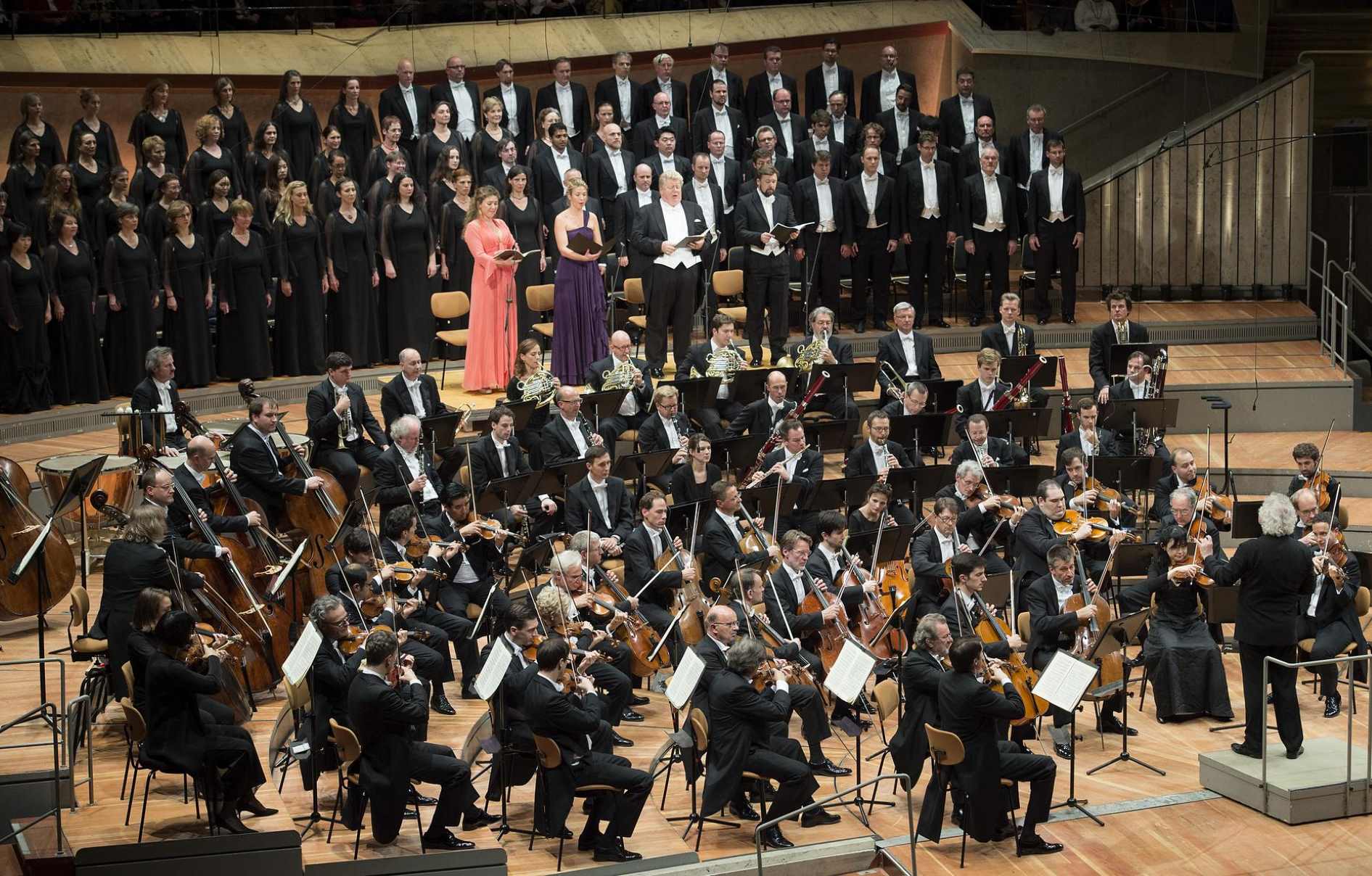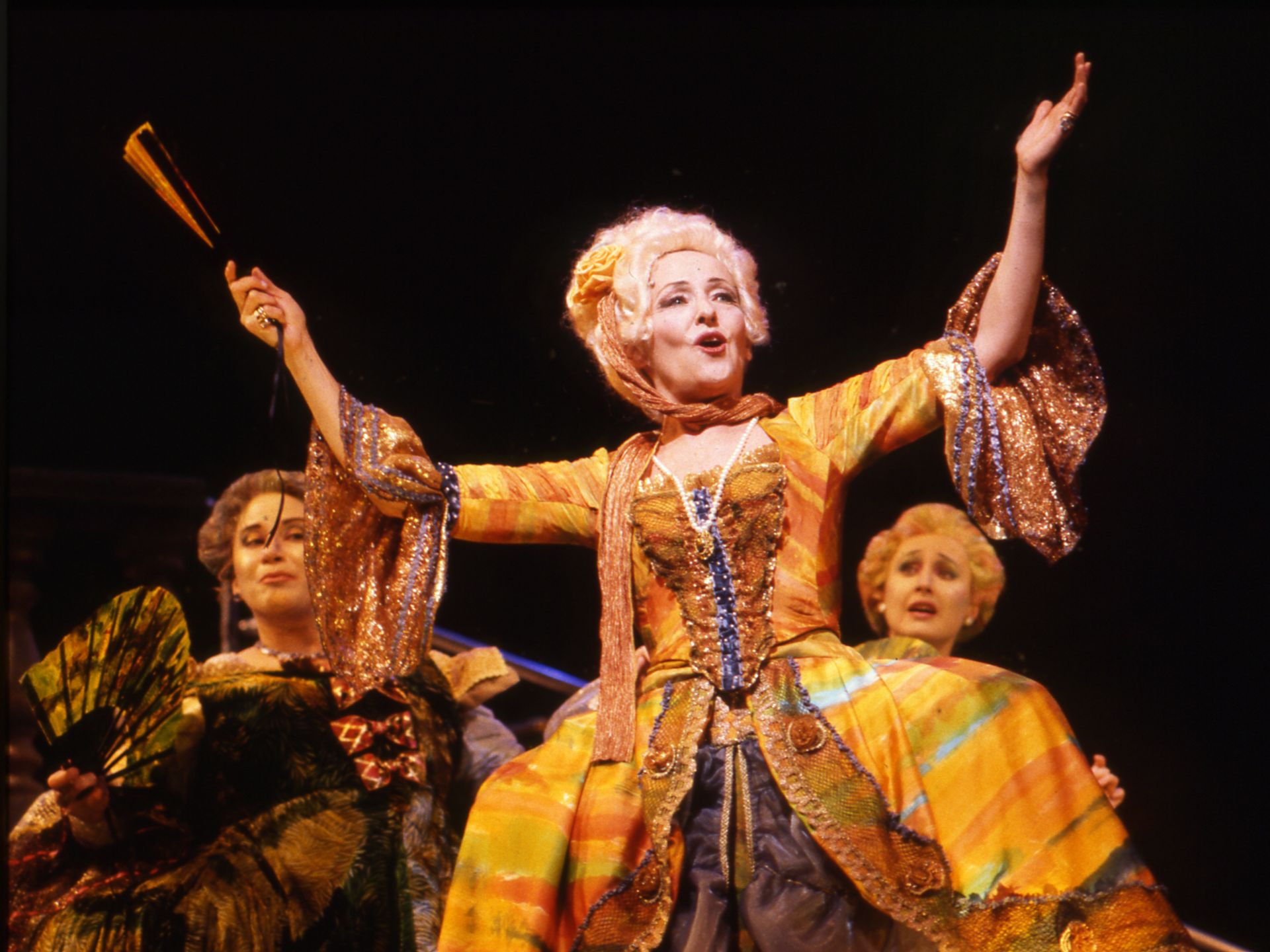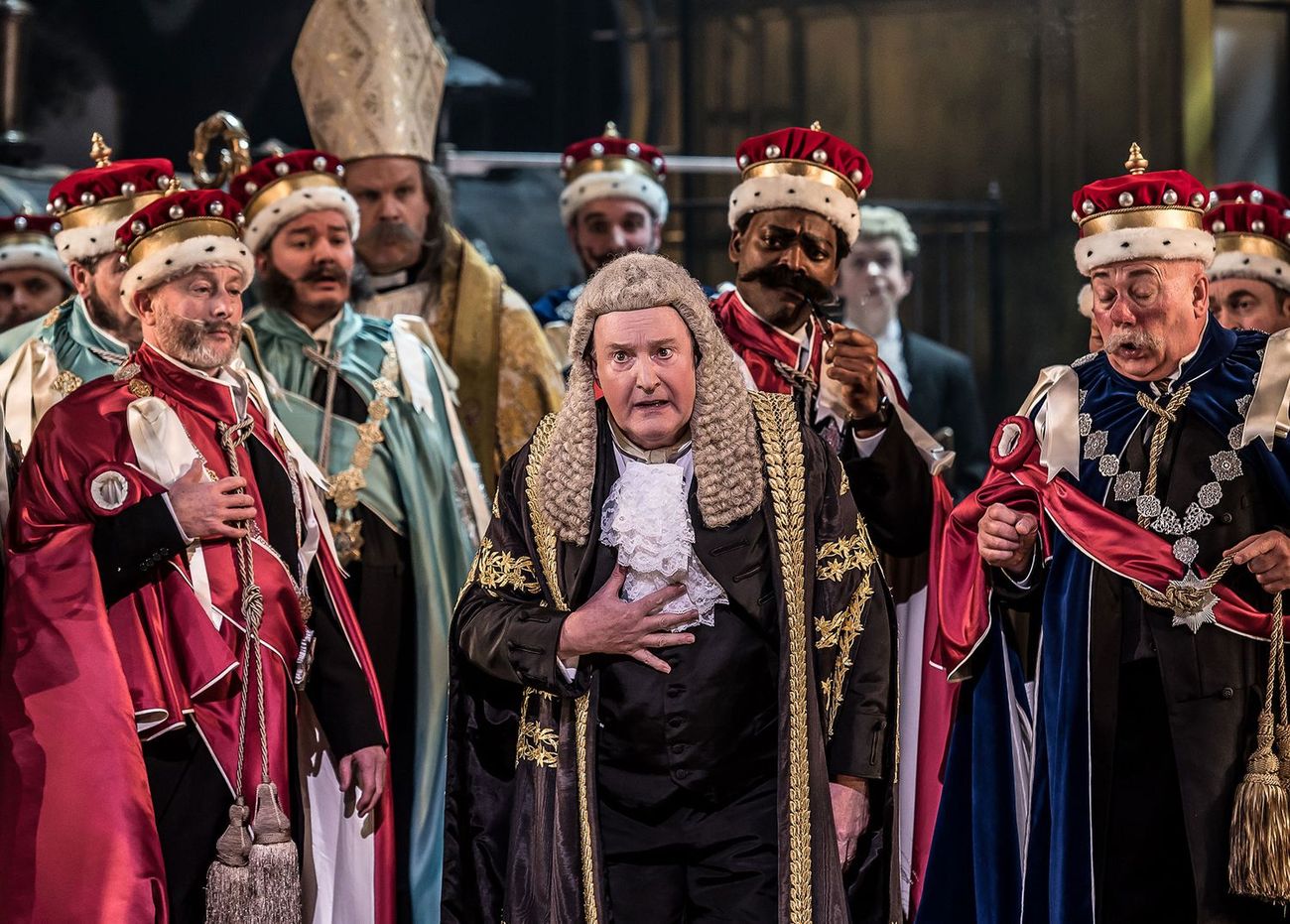Home>Production & Technology>Composer>What Is The Difference Between A Composer And An Arranger


Composer
What Is The Difference Between A Composer And An Arranger
Modified: January 22, 2024
Discover the key distinctions between a composer and an arranger. Uncover the unique roles and creative processes involved in music composition.
(Many of the links in this article redirect to a specific reviewed product. Your purchase of these products through affiliate links helps to generate commission for AudioLover.com, at no extra cost. Learn more)
Table of Contents
Introduction
In the world of music, the roles of a composer and an arranger are often misunderstood or even used interchangeably. While both are crucial to the creation and interpretation of music, they have distinct roles and responsibilities that set them apart. Understanding the difference between a composer and an arranger is essential for anyone interested in delving into the intricacies of music production and performance.
At its core, music is an art form that allows individuals to express and communicate emotions, stories, and ideas. Composers and arrangers are the masterminds behind the composition and arrangement of musical pieces, shaping and transforming musical ideas into tangible works of art.
To grasp the distinction between a composer and an arranger, we must examine their primary functions and areas of expertise. While their paths may overlap at times, their contributions to the music world vary significantly.
In this article, we will explore the definition and roles of composers and arrangers, their required skills and background, the creative processes they employ, their roles in the music industry, how they collaborate with performers, and the responsibilities they carry. We will also touch upon the use of musical notation and software in their craft. Through examples of famous composers and arrangers, we will shed light on the impact and legacy they have left on the world of music.
Definition of a Composer
A composer is an individual who creates original musical compositions. They are the architects of music, using their creative instincts and technical knowledge to design pieces that convey specific emotions, tell stories, or express abstract concepts. Composers possess a profound understanding of music theory, harmony, melody, rhythm, and structure, allowing them to conceive complex musical ideas and transform them into notation or digital formats.
Composers demonstrate their unique artistic voice through the creation of musical works in various genres and styles, such as classical, jazz, pop, rock, electronic, and film scores. They often work independently or collaborate with performers, directors, and producers to bring their compositions to life.
The role of a composer extends beyond simply writing musical notes. They are responsible for shaping the overall structure and form of a composition, determining the instrumentation, dynamics, and tempo, and ensuring the proper balance and coherence of the musical elements. Composers often draw inspiration from a wide range of sources, including personal experiences, cultural influences, historical events, and other artistic disciplines.
In their creative process, composers may start with a small musical motif, a melodic line, or a harmonic progression, which serves as the foundation of their composition. They develop and expand upon these initial ideas, exploring different ways to transform and develop them through techniques such as modulation, variation, and contrast.
Composers also have a deep understanding of music notation and the ability to communicate their musical ideas using symbols and notational conventions. They may write their compositions using traditional staff notation or employ modern music production software and digital audio workstations for creating electronic music.
The work of composers has greatly influenced the development of music throughout history. From the classical compositions of Beethoven and Mozart to the groundbreaking works of contemporary composers like Philip Glass and Hans Zimmer, their contributions have shaped genres, pushed boundaries, and provided a platform for musicians and performers to showcase their skills and interpretations.
In summary, composers are skilled artists who conceive and create original musical compositions. They possess a deep understanding of music theory, utilize their artistic instincts, and employ various techniques to bring their musical ideas to life. Through their compositions, composers leave an indelible mark on the world of music, enriching it with their unique voices and contributions.
Definition of an Arranger
An arranger is a musical professional who takes existing musical compositions and adapts or transforms them into new arrangements or versions. While composers create original works, arrangers work with pre-existing musical material, reimagining and reinterpreting it to suit different settings, genres, or performance needs.
The role of an arranger involves a deep understanding of musical elements, such as harmony, melody, rhythm, and instrumentation. They have the ability to analyze and deconstruct a composition, identifying its core components and extracting its essence. Arrangers also possess a keen ear for musical nuances and the skill to reimagine a piece in order to achieve a specific artistic or dramatic effect.
Arrangers play a pivotal role in enhancing and enriching musical performances. They utilize their creative vision to make thoughtful decisions regarding the instrumentation, voicing, and overall structure of a piece. With careful consideration, an arranger can transform a simple solo piano piece into a lush orchestral arrangement, create a new arrangement suitable for a vocal ensemble, or adapt a classical work for a jazz band.
The creative process of an arranger involves studying the original composition, analyzing its melodic and harmonic structure, and determining how to modify and enhance it while staying true to its essence. Arrangers may experiment with different chord progressions, rhythmic patterns, or improvisational sections to add their own unique touch to the arrangement.
Arrangers often collaborate closely with performers, conductors, and producers to bring their arrangements to life. They work hand-in-hand with musicians and singers to ensure that the arrangement suits the abilities and strengths of the performers. This collaboration allows for the expression of artistic interpretation and personalization, enhancing the overall impact and emotional resonance of the performance.
Arrangement can take many forms, from the adaptation of a classical symphony for a small ensemble to the reimagining of a popular song for a different genre or style. Through their arrangements, arrangers contribute to the diversity and versatility of music, enabling musicians to explore new interpretations and audiences to experience familiar compositions in fresh and exciting ways.
Notable arrangers have left a significant mark on the music industry. From the innovative arrangements of Duke Ellington and Nelson Riddle to the contemporary arrangements of David Foster and Jacob Collier, their work has shaped the sound and direction of music across a range of genres.
In summary, arrangers are skilled professionals who reimagine and transform existing musical compositions. They possess a deep understanding of musical elements and creatively adapt compositions to suit different settings, genres, or performance needs. Through their arrangements, they contribute to the artistic interpretation and versatility of music, breathing new life into familiar pieces.
Musical Skills and Background Required
Both composers and arrangers require a solid foundation in music theory and a high level of proficiency with their chosen instrument(s). However, there are certain specific skills and backgrounds that are particularly important for each role.
For composers, a deep understanding of music theory is crucial. They need to have a thorough knowledge of harmonies, chord progressions, melody writing, and counterpoint. This enables them to create original and cohesive musical compositions that effectively convey their artistic intentions. Composers should also be skilled in music notation and have the ability to communicate their ideas clearly to musicians who will be performing their compositions.
In addition to music theory, composers often benefit from studying the works of other composers throughout history. This helps them develop a broader musical vocabulary, gain inspiration from different styles and genres, and understand the evolution of musical techniques and structures.
Arrangers, on the other hand, require a strong foundation in harmony, as they need to analyze and modify existing compositions to create new arrangements. They should have a keen sense of how different musical elements interact with each other and the ability to make informed decisions about voicing, instrumentation, and overall balance.
Arrangers may also have expertise in different musical genres and styles, as they need to adapt compositions to suit specific performance contexts. For example, a jazz arranger needs to be well-versed in jazz idioms, improvisation, and swing rhythms, while a classical arranger must have an understanding of orchestration techniques and the capabilities of different instruments.
Both composers and arrangers benefit from having experience as performers. This firsthand knowledge allows them to understand the practical aspects of music-making and how their compositions or arrangements will be interpreted by musicians. It also helps them to write music that is idiomatic and comfortable for performers to play.
Additionally, both roles may involve working with music production software and digital audio workstations. Familiarity with these tools allows composers and arrangers to create digital mock-ups of their compositions or arrangements, listen to playback, and make necessary adjustments.
In summary, composers and arrangers require a solid foundation in music theory, proficiency on their instrument(s), and the ability to communicate their musical ideas effectively. Composers benefit from studying the works of other composers, while arrangers may have expertise in different musical genres and styles. Both roles may involve experience as performers and familiarity with music production software. By honing these skills and backgrounds, composers and arrangers can bring their musical visions to life and contribute to the world of music in meaningful ways.
Creative Process
The creative process of both composers and arrangers involves a combination of inspiration, exploration, experimentation, and refinement. While their approaches may differ in some aspects, the ultimate goal is to create compelling and evocative musical compositions or arrangements.
Composers typically begin the creative process by seeking inspiration from various sources. This could be anything from personal experiences, nature, visual art, literature, or even emotions. They often immerse themselves in these sources, allowing the ideas and themes to percolate in their minds.
Once they have a spark of inspiration, composers start to develop their musical ideas. This may involve improvisation on their chosen instrument, playing around with melodies and harmonies, or experimenting with different rhythmic patterns. They explore various musical possibilities, refining and shaping their ideas as they go.
The next step for composers is to capture their musical ideas in notation or through music production software. They translate their melodies, harmonies, and rhythms into a musical language that can be understood by performers. This process allows composers to refine their composition further, making decisions about dynamics, phrasing, and overall structure.
Arrangers, on the other hand, start their creative process with an existing composition. They analyze the original piece closely, deconstructing its elements and examining its structure, melody, and harmony. Understanding the essence of the composition, the arranger then contemplates ways to reimagine and transform it.
Arrangers experiment with different harmonizations, voicings, and rhythmic variations to create a fresh arrangement that breathes new life into the piece. They may consider the instrumentation, exploring how different instruments can enhance the original composition and create specific moods or textures.
Collaboration plays a significant role in the creative process for both composers and arrangers. Composers often work closely with performers or ensembles, discussing their musical intentions, interpretations, and preferences. This collaboration allows composers to refine their compositions further, tailoring them to the unique abilities and strengths of the performers.
Arrangers collaborate not only with performers but also with composers. They seek input and feedback from the composers themselves to ensure that the arrangement aligns with the composer’s artistic vision. This collaborative process allows for a dynamic exchange of ideas and perspectives, ultimately resulting in a well-crafted arrangement that honors the original composition while offering a fresh interpretation.
Throughout the creative process, both composers and arrangers engage in constant refinement and revision. They listen to their compositions or arrangements with a critical ear, making adjustments to improve flow, clarity, and emotional impact. This iterative process continues until the final version of the musical piece is achieved.
In summary, the creative process for both composers and arrangers involves seeking inspiration, developing musical ideas, capturing them in notation or digital formats, experimenting with different approaches, collaborating with performers or composers, and engaging in constant refinement. It is through this creative journey that composers and arrangers bring their musical visions to life, whether by composing original works or reimagining existing compositions.
Role in the Music Industry
Both composers and arrangers play pivotal roles in the music industry, contributing their unique talents and creative vision to the creation and interpretation of music.
Composers are responsible for producing original musical compositions that serve as artistic expressions, cultural contributions, and entertainment. They create pieces that can be performed live, recorded for albums or films, or utilized in other media such as television shows, video games, and advertisements. Composers often collaborate with performers, ensembles, and orchestras to bring their compositions to life, ensuring that the intended emotions and messages are effectively conveyed.
In addition to creating music, composers often work closely with music publishers and licensing agencies to secure copyrights, licensing agreements, and royalties for their compositions. This enables them to protect their intellectual property and ensure that they receive proper compensation when their work is used commercially.
Arrangers, on the other hand, contribute to the music industry by providing fresh perspectives and interpretations of existing compositions. They transform compositions to suit different genres, styles, or performance settings, expanding the accessibility and versatility of music. Arrangers create arrangements that cater to specific artists, ensembles, or projects, helping to bring out the best in the performers and enhance the overall artistic impact.
Arrangers also play a crucial role in music production. They work closely with producers, directors, and artists to create customized arrangements that align with the artistic vision and goals of a project. This can involve adapting existing songs for films, theater productions, or studio recordings, tailoring the arrangements to suit the specific needs of the production.
Furthermore, both composers and arrangers often collaborate with music directors, conductors, and performers in various musical settings. They provide guidance, insights, and interpretations to ensure that the compositions or arrangements are accurately performed and effectively communicated to the audience. This collaborative process fosters creativity and artistic growth, resulting in memorable and impactful musical performances.
In the ever-evolving landscape of the music industry, composers and arrangers also have the opportunity to embrace technology and digital platforms. They can leverage music production software, virtual instruments, and online distribution channels to reach a broader audience and promote their work globally. This accessibility opens up new avenues for exposure and recognition.
In summary, both composers and arrangers play vital roles in the music industry. Composers create original compositions that serve as artistic expressions and entertainment, while arrangers bring fresh interpretations and adapt existing compositions to suit different genres and performance contexts. Their contributions span across various mediums and settings, enriching the musical landscape and enhancing the artistic experiences of performers and audiences alike.
Collaboration with Performers
Both composers and arrangers rely heavily on collaboration with performers to bring their musical creations to life. This collaboration is essential in capturing the intended emotions, nuances, and interpretations of their compositions or arrangements.
Composers often work closely with performers from the early stages of the creative process. They discuss their musical vision and the desired emotional impact of the composition. This collaboration helps performers understand the composer’s intentions and allows them to bring their own artistic interpretations to the table.
During rehearsals and performances, composers actively engage with performers, providing guidance and feedback to ensure that the musical piece is played as intended. This collaboration is vital in achieving the desired dynamics, phrasing, and emotional resonance of the composition.
Collaboration with performers also plays a crucial role in allowing composers to refine and make adjustments to their compositions. Performers may offer insights and suggestions based on their own experiences and expertise, ensuring that the composition feels comfortable and natural for the performers.
Similarly, arrangers collaborate closely with performers to fully understand their strengths, abilities, and preferences. By having open and ongoing communication, arrangers can tailor their arrangements to showcase the unique talents of the performers.
Understanding the performer’s capabilities also allows arrangers to make strategic choices regarding instrument voicing, arranging harmonies, and instrumentation. They work hand-in-hand with performers to strike a balance between honoring the original composition and creating arrangements that highlight the performers’ skills and interpretative style.
Collaboration between arrangers and performers also benefits from the performers’ expertise in a particular genre or style. For example, a jazz arranger may work closely with jazz musicians to incorporate improvisation and create arrangements that allow for expressive freedom within the piece. This collaboration results in arrangements that not only respect the original composition but also showcase the performers’ strengths in a specific style.
Furthermore, composers and arrangers often collaborate with music directors and conductors in larger musical productions. These collaborations are vital in ensuring that the musical interpretation aligns with the director’s vision and the overall artistic direction of the performance or production.
Through collaboration with performers, composers and arrangers gain valuable insights and perspectives, ultimately enhancing the authenticity and impact of the musical piece. This creative exchange fosters a sense of shared ownership and investment in the performance, resulting in more engaging and authentic interpretations.
In summary, collaboration with performers is a fundamental aspect of both composers and arrangers’ work. By actively engaging with performers, they capture the intended emotions, refine their compositions or arrangements, and bring their musical visions to life. This collaborative process not only enhances the artistic quality of the music but also fosters a sense of shared ownership and creative growth among all involved.
Responsibilities and Duties
Both composers and arrangers have specific responsibilities and duties that they fulfill in their respective roles within the music industry.
Composers are responsible for creating original musical compositions. Their primary duty is to conceptualize and craft musical works that communicate their artistic vision and intent. This involves composing melodies, harmonies, rhythms, and structures that evoke specific emotions, tell stories, or convey abstract concepts.
Composers also have the responsibility to ensure that their compositions are properly notated or recorded. They need to accurately communicate their musical ideas to performers or music producers through traditional notation, music production software, or other digital formats. Clear and precise notation is vital for performers to accurately interpret and execute the composition.
Moreover, composers are responsible for collaborating with performers, directors, or producers to ensure that their compositions are understood and brought to life effectively. This responsibility includes providing guidance, feedback, and revisions to performers during rehearsals or recording sessions, in order to achieve the desired interpretation and artistic expression.
Arrangers, on the other hand, have the responsibility to transform existing musical compositions into new arrangements. This involves reimagining a piece to suit specific genres, styles, or performance contexts. It is their duty to preserve the essence of the original composition while creating an arrangement that showcases performers’ abilities and interpretations.
Arrangers are also responsible for selecting appropriate instrumentation, voicing, and overall structure in their arrangements. They must make informed decisions that enhance the overall balance, dynamics, and expressive qualities of the piece. This entails ensuring that the arrangement suits the intended performers and conveys the desired emotional impact to the audience.
Both composers and arrangers have a responsibility to respect copyright laws and intellectual property rights. This includes securing appropriate licenses, permissions, or contracts when necessary, and ensuring that proper credit is given to all involved collaborators, such as lyricists, librettists, or original composers.
Additionally, composers and arrangers are responsible for keeping up with industry trends and staying informed about new music production software, technologies, and techniques. This helps them remain relevant in a constantly evolving music industry and allows them to effectively utilize modern tools and platforms to showcase their work.
Lastly, both composers and arrangers have a responsibility to themselves as artists. This includes continuously honing their skills, exploring new musical ideas and styles, and seeking opportunities for professional growth and development. They must strive for artistic excellence while being open to feedback, critique, and collaboration.
In summary, composers have the vital responsibility of creating original musical compositions and effectively communicating their artistic vision to performers. Arrangers are responsible for transforming existing compositions into new arrangements that suit specific genres, styles, or performance needs. Both roles involve collaborating with performers, adhering to copyright laws, staying informed with industry trends, and continually refining their skills and artistic expression.
Use of Musical Notation and Software
Both composers and arrangers rely on the use of musical notation and software to document, communicate, and enhance their musical creations. These tools play a crucial role in their workflow and enable them to effectively capture their musical ideas and collaborate with performers.
Musical notation is a system of symbols and markings used to represent musical elements such as pitch, rhythm, dynamics, and articulations. Composers use notation to transcribe their compositions onto sheet music, allowing performers to accurately interpret and play their works. Notation provides a standardized and universal means of communicating musical ideas and instructions.
Composers utilize traditional staff notation to notate their compositions, writing out the individual parts for various instruments or vocalists. They use clefs, key signatures, time signatures, and other symbols to convey the necessary musical information. By employing notation, composers can preserve their compositions for future performances, facilitate rehearsals, and ensure consistent interpretations across different ensembles or performances.
In addition to traditional notation, composers may also make use of computer software and digital notation programs. These programs provide advanced features that streamline the composition process, allowing composers to notate their works on a computer or tablet. Digital notation software offers benefits such as easy editing, playback functionality, and the ability to share and collaborate electronically.
Arrangers also make use of musical notation to document their arrangements. However, their approach may differ slightly from that of composers. Arrangers often work with pre-existing compositions, modifying and reimagining them to suit different musical contexts. They notate their arrangements by incorporating new harmonizations, rhythms, and voicings. This allows performers to understand and perform the arrangement as intended.
In addition to traditional notation, arrangers may rely on lead sheets or chord charts. These simplified forms of notation provide basic harmonic and melodic information, allowing performers to improvise and interpret the arrangement to some extent.
Both composers and arrangers can benefit from utilizing music production software and digital audio workstations (DAWs). These tools allow them to create electronic mock-ups, produce high-quality recorded demos, and experiment with different sounds and instrumentations. They can manipulate MIDI (Musical Instrument Digital Interface) data, explore virtual instrument libraries, and apply effects to enhance their compositions or arrangements.
Music production software and DAWs also allow composers and arrangers to collaborate with performers remotely. They can share digital files, make annotations, and receive feedback from performers, all within a digital environment. This streamlines the collaborative process and helps bridge geographical limitations.
In summary, both composers and arrangers make use of musical notation and software to document, communicate, and enhance their musical creations. Traditional notation preserves their compositions and allows for consistent interpretations by performers. Digital notation software and music production tools further enhance their workflow, making composition, arrangement, and collaboration more efficient and dynamic.
Examples of Famous Composers
Throughout history, countless composers have left an indelible mark on the world of music. Their innovative compositions have shaped genres, pushed boundaries, and captivated audiences. Here are a few examples of famous composers who have made significant contributions to the musical landscape:
1. Ludwig van Beethoven (1770-1827): Considered one of the greatest composers of all time, Beethoven’s works bridge the gap between classical and romantic periods. His symphonies, concertos, and piano sonatas, such as the iconic Symphony No. 5 and the Moonlight Sonata, showcase his mastery of form, emotion, and musical development.
2. Wolfgang Amadeus Mozart (1756-1791): A child prodigy who composed over 600 works in his short life, Mozart is celebrated for his extraordinary musical talent and prolific output. His compositions span various genres, including symphonies, operas, chamber music, and piano sonatas. Notable works include the Symphony No. 40, the opera The Marriage of Figaro, and the Piano Concerto No. 21.
3. Johann Sebastian Bach (1685-1750): Bach, a Baroque-era composer, is revered for his complex counterpoint and profound musical expression. His compositions include religious choral works, organ fugues, and keyboard suites. The Mass in B Minor, the Brandenburg Concertos, and The Well-Tempered Clavier exemplify his mastery of composition and craftsmanship.
4. Frédéric Chopin (1810-1849): Chopin, known as the “poet of the piano,” is renowned for his intimate and deeply emotional compositions. His nocturnes, preludes, and piano concertos possess a unique blend of virtuosity and lyricism. Works like the Revolutionary Étude and the Polonaise in A-flat major showcase his technical brilliance and melodic inventiveness.
5. Claude Debussy (1862-1918): Debussy was a leading figure in impressionist music, known for his mastery of harmony and innovative use of color and texture. His compositions, such as the orchestral masterpiece Prelude to the Afternoon of a Faun and the piano suite Clair de lune, evoke vivid imagery and transport listeners to dreamlike landscapes.
These composers represent a small fraction of the diverse and rich tapestry of musical genius that has shaped our world. Their works continue to inspire and influence generations of composers, performers, and music lovers.
In summary, composers such as Beethoven, Mozart, Bach, Chopin, and Debussy have made lasting contributions to the world of music through their inventive compositions, remarkable skill, and profound artistic expression.
Examples of Famous Arrangers
Arrangers play a vital role in the music industry, reshaping existing compositions and bringing new interpretations to the world of music. Here are a few examples of famous arrangers who have made significant contributions to the musical landscape:
1. Nelson Riddle (1921-1985): Known for his work with legendary vocalist Frank Sinatra, Nelson Riddle created iconic arrangements that defined the sound of Sinatra’s recordings. His lush orchestrations and sophisticated harmonies can be heard in classics like “I’ve Got You Under My Skin” and “Fly Me to the Moon.”
2. Quincy Jones (1933- ): Quincy Jones is not only a renowned composer and record producer but also an exceptional arranger. He has crafted arrangements for some of the biggest names in music, including Michael Jackson, Ella Fitzgerald, and Frank Sinatra. His arrangements for albums like “Thriller” and “Off the Wall” have stood the test of time.
3. Billy Strayhorn (1915-1967): As a frequent collaborator and arranger for jazz legend Duke Ellington, Billy Strayhorn left an indelible mark on the world of jazz. His arrangements added depth and complexity to Ellington’s compositions, resulting in timeless pieces like “Take the A Train” and “Lush Life.”
4. Gil Evans (1912-1988): Noted for his work in the realm of jazz, Gil Evans was an innovative arranger who worked with icons like Miles Davis. His collaboration with Davis on the album “Sketches of Spain” showcases his ability to fuse jazz with classical influences, creating groundbreaking arrangements that pushed the boundaries of the genre.
5. Don Sebesky (1937- ): With a career spanning over five decades, Don Sebesky has established himself as one of the most prolific and versatile arrangers of our time. He has fused jazz, pop, and classical elements in his arrangements, working with renowned artists such as Tony Bennett, Barbra Streisand, and Paul Simon.
These arrangers have left an enduring legacy in the music industry, enriching compositions through their distinctive interpretations, imaginative orchestrations, and innovative approaches. Their arrangements have contributed to the success and longevity of countless recordings, bridging genres and captivating listeners with their artistry.
In summary, arrangers like Nelson Riddle, Quincy Jones, Billy Strayhorn, Gil Evans, and Don Sebesky have made significant contributions to the world of music through their visionary arrangements. Their artistry and creative approaches have shaped the sound and interpretation of iconic recordings, leaving an indelible mark on the music industry.
Conclusion
In conclusion, composers and arrangers are integral to the creation, interpretation, and evolution of music. While composers focus on crafting original compositions that express their artistic vision and communicate emotions, arrangers provide fresh interpretations and adaptations of existing works to suit different genres, styles, and performance contexts.
Composers harness their deep understanding of music theory, harmony, melody, and structure to compose original works that captivate and inspire listeners. Their compositions reflect their unique artistic voices and leave a lasting impact on the music world.
Arrangers, on the other hand, utilize their skills in harmony, instrumentation, and creative reimagining to transform existing compositions into new arrangements. They bring their own artistic touch to the table while honoring the essence and intent of the original work.
Both composers and arrangers collaborate closely with performers, directors, and producers to ensure that their musical creations are effectively realized and faithfully interpreted. This collaboration fosters a dynamic exchange of ideas and perspectives, resulting in performances that are authentic, emotionally impactful, and artistically compelling.
The use of musical notation and software plays an essential role in the work of both composers and arrangers. Notation allows for the communication and preservation of musical ideas, while music production software and digital tools enhance their workflow, facilitating collaboration and exploration of new sonic possibilities.
Examples of famous composers, such as Beethoven, Mozart, Bach, Chopin, and Debussy, serve as enduring reminders of the transformative power of composition. Their works continue to inspire and shape the musical landscape across generations.
Similarly, renowned arrangers like Nelson Riddle, Quincy Jones, Billy Strayhorn, Gil Evans, and Don Sebesky have contributed innovative arrangements that have added new dimensions and interpretations to existing compositions. Their arrangements have helped shape the sound and direction of various musical genres.
In the dynamic and ever-evolving music industry, composers and arrangers continue to play significant roles, pushing the boundaries of creativity and contributing to the richness and diversity of the musical landscape.
Overall, composers and arrangers bring forth a wealth of creativity, expertise, and innovation. Their passion for music, coupled with their technical proficiency, allows them to create timeless compositions and imaginative arrangements that resonate with audiences of all kinds. Their contributions ensure that the magic of music lives on, inspiring and enriching our lives for generations to come.











